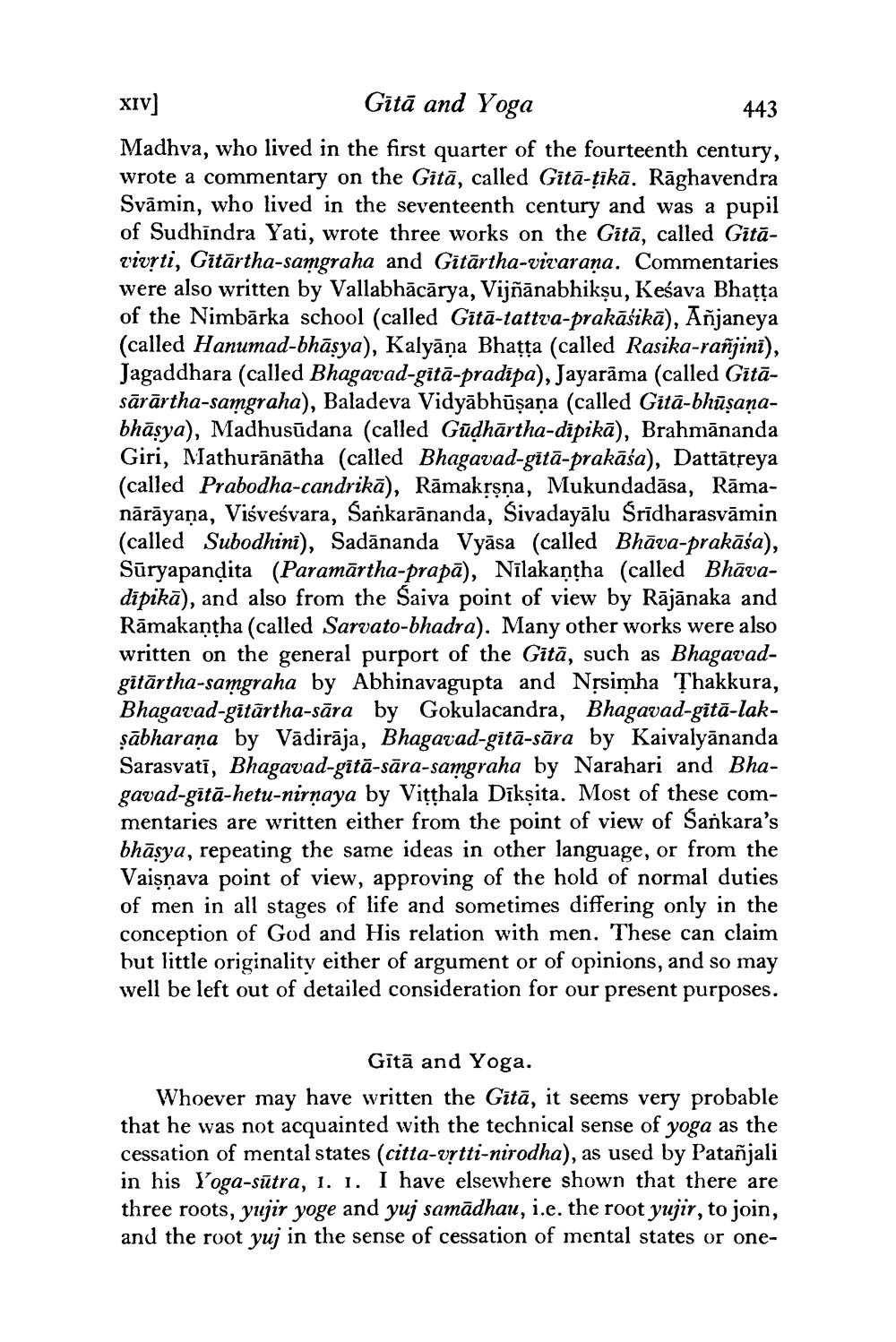________________
XIV]
Gitā and Yoga
443
Madhva, who lived in the first quarter of the fourteenth century, wrote a commentary on the Gitā, called Gītā-ṭikā. Rāghavendra Svāmin, who lived in the seventeenth century and was a pupil of Sudhindra Yati, wrote three works on the Gitā, called Gităvivṛti, Gitartha-samgraha and Gitārtha-vivaraṇa. Commentaries were also written by Vallabhācārya, Vijñānabhikṣu, Keśava Bhaṭṭa of the Nimbarka school (called Gitā-tattva-prakāśikā), Anjaneya (called Hanumad-bhāṣya), Kalyāņa Bhaṭṭa (called Rasika-rañjini), Jagaddhara (called Bhagavad-gitā-pradīpa), Jayarāma (called Gitāsārārtha-samgraha), Baladeva Vidyābhūṣaṇa (called Gitā-bhūṣaṇabhāṣya), Madhusudana (called Gūḍhārtha-dipikā), Brahmananda Giri, Mathuranatha (called Bhagavad-gītā-prakāśa), Dattatreya (called Prabodha-candrikā), Rāmakṛṣṇa, Mukundadāsa, Rāmanārāyaṇa, Viśveśvara, Sankarānanda, Śivadayālu Śrīdharasvāmin (called Subodhini), Sadānanda Vyasa (called Bhāva-prakāśa), Suryapanḍita (Paramārtha-prapā), Nilakantha (called Bhāvadipikā), and also from the Saiva point of view by Rājānaka and Rāmakantha (called Sarvato-bhadra). Many other works were also written on the general purport of the Gita, such as Bhagavadgitärtha-samgraha by Abhinavagupta and Nrsimha Thakkura, Bhagavad-gitartha-sara by Gokulacandra, Bhagavad-gītā-lakşabharana by Vādirāja, Bhagavad-gītā-sāra by Kaivalyananda Sarasvati, Bhagavad-gitā-sāra-samgraha by Narahari and Bhagavad-gitā-hetu-nirnaya by Vitthala Dīkṣita. Most of these commentaries are written either from the point of view of Sankara's bhāṣya, repeating the same ideas in other language, or from the Vaisnava point of view, approving of the hold of normal duties of men in all stages of life and sometimes differing only in the conception of God and His relation with men. These can claim but little originality either of argument or of opinions, and so may well be left out of detailed consideration for our present purposes.
Gītā and Yoga.
Whoever may have written the Gītā, it seems very probable that he was not acquainted with the technical sense of yoga as the cessation of mental states (citta-vṛtti-nirodha), as used by Patanjali in his Yoga-sutra, 1. 1. I have elsewhere shown that there are three roots, yujir yoge and yuj samādhau, i.e. the root yujir, to join, and the root yuj in the sense of cessation of mental states or one




